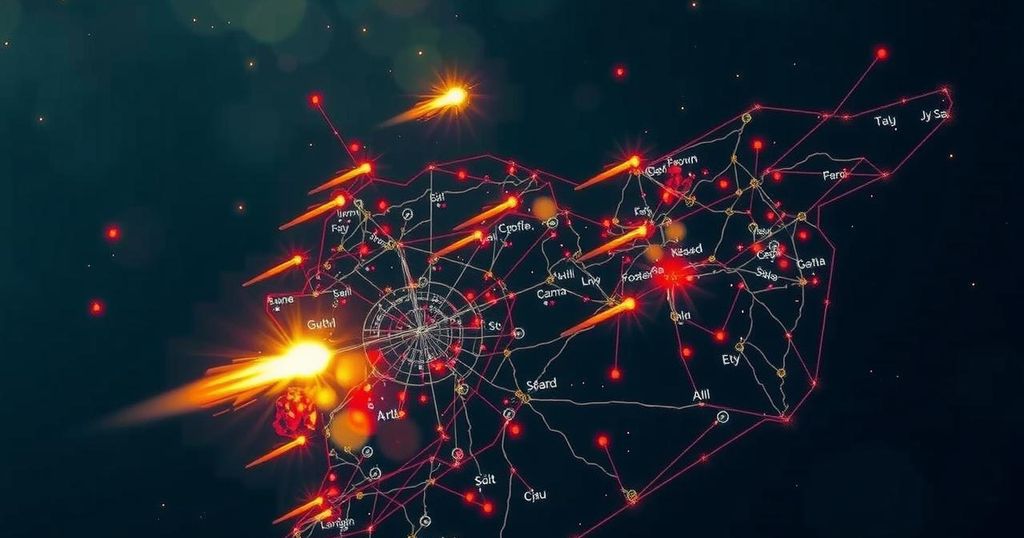On November 29, 2024, Israel conducted airstrikes on Hezbollah weapons smuggling sites in Syria, challenging a recently established ceasefire. The ceasefire, intended to halt escalating violence between Israel and Hezbollah, has already faced violations from both sides. As displaced residents return home, the situation remains tense and uncertain, with significant casualties reported on both the Israeli and Lebanese sides since the conflict began.
On Saturday, Israeli military aircraft conducted strikes on Hezbollah weapons smuggling sites located along the border of Syria and Lebanon. This action tested the fragile ceasefire that was established just days prior, on November 27, 2024, following months of hostilities. Israel asserted that the strikes were a response to violations of the ceasefire agreement, although the conflict’s broader dynamics suggested ongoing tensions in the region. This latest episode of violence came amidst reports of unrest spreading throughout the Middle East, as Syrian insurgents launched a surprise offensive into Aleppo, further complicating the already volatile situation.
The ceasefire, negotiated by the United States and France, mandated a two-month hiatus in hostilities, during which Hezbollah was to withdraw its forces north of Lebanon’s Litani River while Israeli soldiers were expected to retreat into Israeli territory. Despite this, various incidents, including the strike in Majdal Zoun, indicated persistent friction, with both sides exchanging accusations of ceasefire violations. Many Lebanese displaced by the conflict were attempting to return to their homes, amid official warnings of danger in the region.
Israel’s military has maintained a presence in southern Lebanon and has claimed the right to conduct operations in response to any perceived ceasefire breaches. Concerns linger among the Israeli population regarding Hezbollah’s influence and threats to northern communities, despite the ongoing humanitarian crisis within Lebanon, where over 3,760 individuals have lost their lives, predominantly civilians, since the commencement of hostilities. The complexity of this conflict is marked by significant geopolitical stakes, reflecting the historical tensions between Israel and Hezbollah, which have been further exacerbated by involvement from external powers and the broader Middle Eastern instability.
The recent conflict between Israel and Hezbollah has roots in long-standing tensions exacerbated by various regional dynamics. In response to the latest violence, a ceasefire was brokered by international actors, including the United States and France. This ceasefire was meant to provide a temporary respite after months of fierce fighting, during which both sides suffered casualties. The fragile nature of the ceasefire, however, continues to be tested by sporadic violence and allegations of violations, necessitating a careful examination of the situation to understand the implications for regional stability and humanitarian conditions.
The Israeli airstrikes against Hezbollah smuggling sites highlight the fragility of the recent ceasefire established on November 27, 2024, amidst ongoing military and political tensions in the region. The violation of ceasefire terms by both parties indicates deep-rooted issues that may continue to disrupt peace efforts. As displaced individuals attempt to return home, there remains a critical need for monitoring and intervention to ensure stability, protect civilian lives, and address the humanitarian consequences of this enduring conflict.
Original Source: apnews.com






